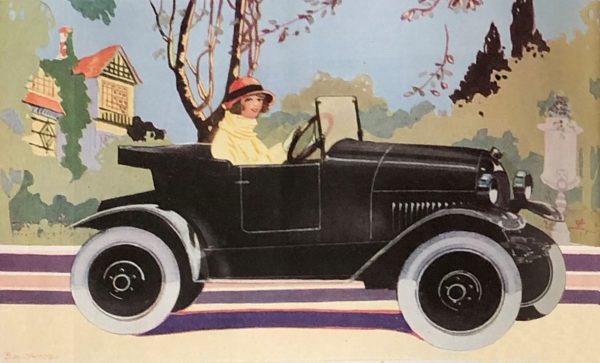
Maurizio Temperino was born in Limone Piemonte in 1888 and when very young was taken to America by his father, a miner who emigrated to Lead City, South Dakota. His father died at the turn of the century and the widow, with Maurizio and four other children born in America, moved back to Piedmont and then to Turin, where the brothers had a better chance of learning Italian – and learning a trade. Maurizio matured quickly in this tough environment, and at the age of fifteen went to work in a bicycle workshop. As his skills as a mechanic refined and his brothers grew up, he had the idea of starting his own business with them in 1907.
They repaired bicycles and motorcycles and vulcanized tyres, a delicate operation in which they were particularly skilled. A year later they built an experimental car, but thereafter they concentrated on producing motorcycles powered by British-built Precision engines.
The Italian car market after World War I was dire, but Maurizio was undaunted. His American years had given him a solid and practical approach: he would produce an economical small car, with no stylistic pretensions but robust, with simplified, standardised components. In 1919 the brothers planned and achieved the production of a light car powered by a 1-litre 2-cylinder air-cooled engine sourced from Della Ferrera – from 1909 until World War I one of the biggest motorcycle manufacturers in Italy. The unusual transmission comprised shaft drive to a rear-axle gearbox that drove only the rear offside wheel. The chassis of the new car, and final assembly, were contracted to Antonio Opessi of Turin, known more for their manufacture of precision scales. Opessi must have been proud of their unusual move into car parts and assembly, because they placed a small advertisement in La Stampa Sportiva at the time of the launch, under an article on Italian bicycle racing. They added “… and similar precision construction” to their range of activities – and included a photograph of the new “Vetturetta Temperino 8-10 HP.” Bodies were sourced from Farina.
A climb of the steep incline from Sassi to Superga in March 1919 boosted sales, as did success at the Sestrières Motorcycle Circuit on 27 July. “A great future for the small car “, gushed the Italian press. People now began to talk about Temperino, even outside Italy. Maurizio knew J.S. Wood, owner of the British Kingsway Motor Company of Aldwych, London. A few months later the Temperino brothers decided to found Temperino Motors (Great Britain) Ltd, for the exclusive sale of their models in Great Britain and Ireland. It was headquartered in Waldorf House, Catherine Street in Aldwych, London, with J.S. Wood as the managing director.
Sales in Britain were brisk from the start. From July 1920 up to 30 cars a month were shipped to London from the parent company in Turin. Our Snapshot is from an advertisement placed by the British company in The Motor-Owner of May 1921. The delightfully naïve image by the artist Bertram Boultwood mixes Italian styling (or lack of it) and English mock-Tudor architecture.
The expansion of the business led to its gradual transformation from a family-run workshop to a company with about a hundred workers. From 1921 the mechanical parts were built by the Officine Moncenisio in Condove, while Farina remained as the suppliers of the bodywork.
If Temperino was doing well, Italy was doing very badly. In 1922, the inflation rate was high and the lira fell heavily. In this environment, any small industrial was destined to succumb sooner or later. Temperino fought bravely but found themselves forced to resort to bank loans. They realised that continuing would make the situation even worse. The company closed in 1924 but with honour, with all debts paid.
Forced to quit being manufacturers, the brothers never stopped being inventors, continuing to file patents for a large number of years. In 1926, they reopened a garage, complete with a petrol pump and repair shop. They could be proud of having been the creators of what might be called the “first Italian small car”.
Picture courtesy of the Richard Roberts Archive







Leave a Comment